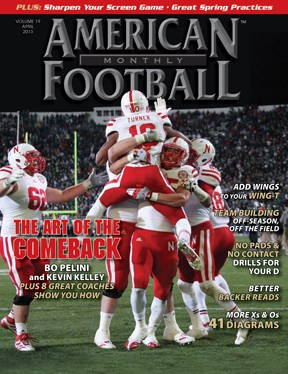Article CategoriesAFM Magazine
|
Developing an Efficient Kickoff Team – Following a detailed teaching progression for your kickoff team will maximize their potential.by: Juan VasquezSpecial Teams Coach, Florida A & M University © More from this issue There are many factors that contribute to a successful season on special teams. The most important factor is the strong support and focus of the head coach to ensure that players and coaches are committed to this phase of the game. We always begin our practices with special teams and then break to offense and defense. That goes for installation meetings, film review and practice. We start with 20 minutes of special teams and end practice with a field goal or punt. The importance of special teams is understood by everyone in the program. Our special teams are also bolstered by who we have coaching, and who we have on the field during special teams. We have all assistant coaches participate in coaching/teaching special teams. On punt, for example: |
|
|||||||
| HOME |
MAGAZINE |
SUBSCRIBE | ONLINE COLUMNISTS | COACHING VIDEOS |
Copyright 2025, AmericanFootballMonthly.com
All Rights Reserved





